|
|
Mari kita mengenali Innovator/Pencipta Devices
 [Copy link]
[Copy link]
|
|
|
CAN AND CAN OPENER
 Ametal can (or canister) for preserving food was invented in 1810 by aPeter Durand, of London, England. Metal cans (also called tins) couldpreserve food for a long period of time. To open a can, a person had touse a hammer and chisel; the can opener wasn't invented for another 50years.The can opener was invented in 1858 by Ezra Warner of Waterbury, Connecticut,USA. Warner's device used a lever and chisel. Until then, cans wereopened using a hammer and chisel; the can opener was invented 50 yearsafter the metal can was invented. Ametal can (or canister) for preserving food was invented in 1810 by aPeter Durand, of London, England. Metal cans (also called tins) couldpreserve food for a long period of time. To open a can, a person had touse a hammer and chisel; the can opener wasn't invented for another 50years.The can opener was invented in 1858 by Ezra Warner of Waterbury, Connecticut,USA. Warner's device used a lever and chisel. Until then, cans wereopened using a hammer and chisel; the can opener was invented 50 yearsafter the metal can was invented.
The can opener was improved in 1870 by William Lyman of WestMeridian, Connecticut, USA. Lyman's device used a rotating wheel and asharp edge. His can opener only fit one size of can, and first had topierce the center of the can.
The modern-day type of can opener (using a serrated wheel) was invented in 1925.
CARBONATED WATER
 Peoplehave been drinking naturally-carbonated water (water with carbondioxide bubbles) since pre-historic times. The English chemist JosephPriestley experimented with putting gases in liquids in 1767, producingthe first artificially-produced carbonated water. Peoplehave been drinking naturally-carbonated water (water with carbondioxide bubbles) since pre-historic times. The English chemist JosephPriestley experimented with putting gases in liquids in 1767, producingthe first artificially-produced carbonated water.
In 1770, the Swedish chemist Torbern Bergman invented a device for making carbonated water from chalk and sulfuric acid.
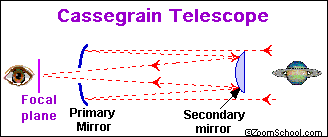 CASSEGRAIN TELESCOPE CASSEGRAIN TELESCOPE
ACassegrain telescope is a wide-angle reflecting telescope with aconcave mirror that receives light and focuses an image. A secondmirror reflects the light through a gap in the primary mirror, allowingthe eyepiece or camera to be mounted at the back end of the tube. TheCassegrain reflecting telescope was developed in 1672 by the Frenchsculptor Sieur Guillaume Cassegrain. A correcting plate (a lens) wasadded in 1930 by the Estonian astronomer and lens-maker Bernard Schmidt(1879-1935), creating the Schmidt-Cassegrain telescope which minimized the spherical aberration of the Cassegrain telescope.
CATAPULT
The catapult is a device thathurls heavy objects or arrows over a large distance. It was invented inancient Greece in 399 BC by Dionysius the Elder of Syracuse. The Romanslater added wheels to the catapult to make it more maneuverable. Thecatapult (also called the ballista) was a major weapon of warfare forwell over a thousand years. A double-armed catapult (also called thetrebuchet) was invented by Mariano Taccola of Siena during the MiddleAges, about AD 1400.
CAT'S EYE ROAD REFLECTOR
The cat's eyeroad reflector is a simple device that has saved countless lives. Theseinexpensive glass and rubber reflectors are set on the roadway atregular intervals, and help motorists see where the road is at night.Each of the cat's eyes reflects oncoming light, acting like lights setinto the road. This device was invented in 1933 by Percy Shaw, fromYorkshire, England. He invented it after he had been driving on a dark,winding road on a foggy night; he was saved from going off the side ofthe hill by a cat, whose eyes reflected his car's lights. Shaw'sinvention mimicked the reflectivity of a cat's eyes. Because of hisinvention, Shaw was awarded the Order of the British Empire ("OBE") byQueen Elizabeth of England in 1965. |
|
|
|
|
|
|
|
|
|
|
|
CELLULAR PHONE
The first automaticanalog cellular phone was made in the 1960's. Commercial models wereintroduced in Japan by NTT on December 3, 1979. They were introduced inScandinavia in 1981, in Chicago, USA, on October 13, 1983 (byMotorola), and in Europe in the late 1980's. Early mobile FM (frequencymodulation radio was invented by Edwin H. Armstrong in 1935) radiotelephones had been in use in the USA since 1946, but since the numberof radio frequencies are very limited in any area, the number of phonecalls was also very limited. Only a dozen or two calls could be made atthe same time in an area. To solve this problem, there could be manysmall areas (called cells) which share the same frequencies. But whenusers moved from one area to another while calling, the call would haveto be switched over automatically without losing the call. In thissystem, a small number of radio frequencies could accommodate a hugenumber of calls. This cellular phone concept was devised by a team ofresearchers at Bell Labs in 1947, but there were no computers availableto do the switching. As small inexpensive computers were developed,cell phones could be produced. Motorola holds the US patents for thecell phone. Henry Taylor Sampson and George H. Miley hold a 1968 patent(US patent #3,591,860) on a "gamma electric cell," which is not acomponent of cellular phones.
CELLULOID
Celluloid is a plastic madefrom cellulose (it is derived from plants). This very flammablematerial was invented in 1869 by the American inventor John WesleyHyatt (it was invented to be a substitute for the elephant ivory usedfor billiard balls). Celluloid was one the first plastics invented; itcan be damaged by moisture.
 CHOCOLATE CHIPS CHOCOLATE CHIPS
RuthWakefield invented chocolate chips (and chocolate chip cookies) in1930. Wakefield ran the Toll House Inn in Whitman, Massachusetts. Hernew cookie invention was called the "Toll House Cookie." Her originalcookies used broken-up bars of semi-sweet chocolate.
 CELSIUS, ANDERS CELSIUS, ANDERS
Anders Celsius (1701-1744) was a Swedish professor of astronomy who devised the Celsius thermometer.He also ventured to the far north of Sweden with an expedition in orderto measure the length of a degree along a meridian, close to the pole,later comparing it with similar measurements made in the SouthernHemisphere. This confirmed that that the shape of the earth is anellipsoid which is flattened at the poles. He also cataloged 300 stars.With his assistant Olof Hiorter, Celsius discovered the magnetic basisfor auroras.
COCA-COLA
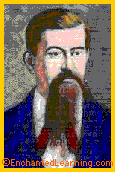 Dr.John Stith Pemberton (1830-1888) was an American pharmacist, soldier,and inventor. He invented Coca-Cola on May 8th, 1886 in Atlanta,Georgia, USA. He had invented many syrups, medicines, and elixirsbefore, including a very popular drink called French Wine of Coca,which contained French Bordeaux wine, coca leaves, and caffeine (fromthe kola nut).When Atlanta banned alcohol consumption in 1885, Pemberton had tochange the formula of his French Wine of Coca, omitting the Frenchwine. He added sugar, citric acid and essential oils of many fruits tothe drink, and the original Coca-Cola was created. It was named for itsmain ingredients, coca leaves and the kola nut. Coca-Cola quicklybecame a very popular soda fountain drink. Dr.John Stith Pemberton (1830-1888) was an American pharmacist, soldier,and inventor. He invented Coca-Cola on May 8th, 1886 in Atlanta,Georgia, USA. He had invented many syrups, medicines, and elixirsbefore, including a very popular drink called French Wine of Coca,which contained French Bordeaux wine, coca leaves, and caffeine (fromthe kola nut).When Atlanta banned alcohol consumption in 1885, Pemberton had tochange the formula of his French Wine of Coca, omitting the Frenchwine. He added sugar, citric acid and essential oils of many fruits tothe drink, and the original Coca-Cola was created. It was named for itsmain ingredients, coca leaves and the kola nut. Coca-Cola quicklybecame a very popular soda fountain drink.
Pemberton became partners with Frank Robinson and David Roe,but the partners soon began to quarrel and Pemberton soon sold hisinterest in Coca-Cola. The formula for Coca-Cola is a closely-guarded secret. |
|
|
|
|
|
|
|
|
|
|
|
COTTON GIN
The cotton gin is a machinethat cleans cotton, removing its many seeds. This device revolutionizedthe cotton industry. Previously, this tedious job had been done byhand, using two combs. Eli Whitney(1765-1825) was an American inventor and engineer who invented thecotton gin; he patented the cotton gin on March 14, 1794. The cottongin made much of the southern United States very rich, but cottonplantation owners rarely paid Whitney for the use of his invention, andWhitney went out of business.
 CRAYONS CRAYONS
Crayonswere invented by Edwin Binney and Harold Smith, who owned a paintcompany in New York City, NY, USA. Binney and Smith invented themodern-day crayon by combining paraffin wax with pigments (colorants).These inexpensive art supplies were an instant success since they werefirst marketed as Crayola crayons in 1903.
CRISTOFORI, BARTOLOMEO
The modernpiano (the pianoforte) was developed from the harpsichord around 1720,by Bartolomeo Cristofori of Padua, Italy. His new instrument had adelicate pianissimo (very soft sound), a strong fortissimo (a veryloud, forceful sound), and every level in between. Thefirst upright piano was made around 1780 by Johann Schmidt of Salzburg,Austria. Thomas Loud of London developed an upright piano whose stringsran diagonally (in 1802), saving even more space. Thefirst upright piano was made around 1780 by Johann Schmidt of Salzburg,Austria. Thomas Loud of London developed an upright piano whose stringsran diagonally (in 1802), saving even more space.
CROSSWORD PUZZLE
 Thecrossword puzzle, a word game, was invented by Arthur Wynne in 1913.Arthur Wynne was a journalist born in Liverpool, England. Wynne wroteweekly puzzle for the US newspaper called the New York World. The firstcrossword puzzle by Wynne was a diamond-shaped puzzle that waspublished in the Sunday New York World on December 21, 1913. The firstBritish crossword puzzle appeared on February 1922; it wass publishedin Pearson's Magazine. Thecrossword puzzle, a word game, was invented by Arthur Wynne in 1913.Arthur Wynne was a journalist born in Liverpool, England. Wynne wroteweekly puzzle for the US newspaper called the New York World. The firstcrossword puzzle by Wynne was a diamond-shaped puzzle that waspublished in the Sunday New York World on December 21, 1913. The firstBritish crossword puzzle appeared on February 1922; it wass publishedin Pearson's Magazine.
CRUM, GEORGE
The potato chip wasinvented in 1853 by George Crum. Crum was a Native American/AfricanAmerican chef at the Moon Lake Lodge resort in Saratoga Springs, NewYork, USA. French fries were popular at the restaurant and one day adiner complained that the fries were too thick. Although Crum made athinner batch, the customer was still unsatisfied. Crum finally madefries that were too thin to eat with a fork, hoping to annoy theextremely fussy customer. The customer, surprisingly enough, was happy- and potato chips were invented! |
Rate
-
1
View Rating Log
-
|
|
|
|
|
|
|
|
|
|
|
Nobody knows who invented spectacles
Roman tragedian Seneca (4 BC–AD 65) is said to have read "all the books in Rome" by peering through a glass globe of water. A thousand years later, presbyopic monks used segments of glass spheres that could be laid against reading material to magnify the letters, basically a magnifying glass, called a "reading stone." They based their invention on the theories of the Arabic mathematician Alhazen (roughly 1000 AD). Yet, Greek philosopher Aristophanes (c. 448 BC-380 BC) knew that glass could be used as a magnifying glass. Nevertheless it was not until roughly 150 AD that Ptolemy discovered the basic rules of light diffraction and wrote extensively on the subject. (The laws of diffraction was formulated much later by Snellius, between 1600 and 1620.)
Venetian glass blowers, who had learned how to produce glass for reading stones, later constructed lenses that could be held in a frame in front of the eye instead of directly on the reading material. It was intended for use by one eye; the idea to frame two ground glasses using wood or horn, making them into a single unit was born in the 13th century.
In 1268 Roger Bacon made the first known scientific commentary on lenses for vision correction. Salvino D’Armate of Pisa and Alessandro Spina of Florence are often credited with the invention of spectacles around 1284 but there is no evidence to conclude this. The first mention of actual glasses is found in a 1289 manuscript when a member of the Popozo family wrote: "I am so debilitated by age that without the glasses known as spectacles, I would no longer be able to read or write." In 1306, a monk of Pisa mentioned in a sermon: "It is not yet 20 years since the art of making spectacles, one of the most useful arts on earth, was discovered." But nobody mentioned the inventor.
In the Middle Ages wearing spectacles signified knowledge and learning. Painters of the time often included spectacles when portraying famous persons even when depicting people who lived before the known invention of spectacles. On numerous paintings the religious teacher Sofronius Eusebius Hieronymus (340 - 420 AD) is portrayed with a lion, a skull and a pair of reading glasses. He is the patron saint of spectacle makers.
It actually is true that eating carrots can help you see better. Carrots contain Vitamin A, which feeds the chemicals that the eye shafts and cones are made of. The shafts capture black and white vision. The cones capture colour images. |
|
|
|
|
|
|
|
|
|
|
|
DAVY, HUMPHRY
 SirHumphry Davy (1778-1829) was an English scientist who invented thefirst electric light in 1800. He experimented with electricity andinvented an electric battery. When he connected wires from his batteryto two pieces of carbon, electricity arced between the carbon pieces,producing an intense, hot, and short-lived light. This is called anelectric arc. Davy also invented a miner's safety helmet and a processto desalinate sea water. Davy discovered the elements boron, sodium,aluminum (whose name he later changed to aluminium), and potassium. SirHumphry Davy (1778-1829) was an English scientist who invented thefirst electric light in 1800. He experimented with electricity andinvented an electric battery. When he connected wires from his batteryto two pieces of carbon, electricity arced between the carbon pieces,producing an intense, hot, and short-lived light. This is called anelectric arc. Davy also invented a miner's safety helmet and a processto desalinate sea water. Davy discovered the elements boron, sodium,aluminum (whose name he later changed to aluminium), and potassium.
DISHWASHER
The first dishwasher waspatented in 1850 by Joel Houghton; his machine was a hand-turned wheelthat splashed water on dishes - unfortunately, it wasn't very effectiveat washing dishes. The first working automatic dishwasher was inventedby Mrs. Josephine Garis (W. A.) Cochran, of Shelbyville, Illinois, in1889. Her dishwasher was a wooden tub with a wire basket in it - thedishes went in the basket, and rollers rotated the dishes. As a handleon the tub was turned, hot, soapy water was sprayed into the tub,cleaning the dishes. Cochran's machine was first shown at the 1893World's Fair in Chicago, Illinois. At first, her machine was onlybought by some restaurants and hotels. Cochran's small company waseventually associated with the KitchenAid company. The dishwasherdidn't become widespread as a labor-saving machine until the 1960s.
 DISPOSABLE DIAPER DISPOSABLE DIAPER
Thedisposable diaper was invented in 1950 by Marion Donovan. Her firstleak-proof diaper was a plastic-lined cloth diaper. Donovan thendeveloped a disposable diaper. She was unsuccessful at selling herinvention to established manufacturers, so she started her own company.
EASTMAN, GEORGE
 GeorgeEastman (1854-1932) was an American inventor who made many improvementsin photography. Eastman invented the dry plate method in 1879; this wasan improvement in the wet plate process photographic process). Hefounded the Eastman Dry Plate company in 1881, located in Rochester,New York. Eastman and William Walker invented flexible roll film in1882, eliminating the necessity of using cumbersome glass plates forphotography. Eastman produced the first simple, all-purpose,fixed-focus camera in 1888, which sold for $25.00; this was the firstKODAK Camera . By 1900, Eastman Kodak was producing a camera that costonly one dollar. Early cameras took round pictures. To get the filmdeveloped, the photographer had to send the entire camera to theRochester factory. The company name was changed to Eastman KodakCompany in 1892, and is still one of the largest photographic companiesin the world. GeorgeEastman (1854-1932) was an American inventor who made many improvementsin photography. Eastman invented the dry plate method in 1879; this wasan improvement in the wet plate process photographic process). Hefounded the Eastman Dry Plate company in 1881, located in Rochester,New York. Eastman and William Walker invented flexible roll film in1882, eliminating the necessity of using cumbersome glass plates forphotography. Eastman produced the first simple, all-purpose,fixed-focus camera in 1888, which sold for $25.00; this was the firstKODAK Camera . By 1900, Eastman Kodak was producing a camera that costonly one dollar. Early cameras took round pictures. To get the filmdeveloped, the photographer had to send the entire camera to theRochester factory. The company name was changed to Eastman KodakCompany in 1892, and is still one of the largest photographic companiesin the world.
ECKERT, JOHN PRESPER
ENIAC stands for"Electronic Numerical Integrator and Computer." It was one of the firstall-purpose, all-electronic digital computers. This room-sized computerwas built by the physicist John William Mauchly (Aug. 30, 1907 - Jan.8, 1980) and the electrical engineer John Presper Eckert, Jr. (April 9,1919 - June 3, 1995) at the University of Pennsylvania. They completedthe machine in November, 1945. |
|
|
|
|
|
|
|
|
|
|
|
ELECTRIC IRON
 Theelectric iron was invented in 1882 by Henry W. Seeley, a New Yorkinventor Seeley patented his "electric flatiron" on June 6, 1882(patent no. 259,054). His iron weighed almost 15 pounds and took a longtime to warm up.Other electric irons had also been invented, including one fromFrance (1882), but it used a carbon arc to heat the iron, a methodwhich was dangerous. Theelectric iron was invented in 1882 by Henry W. Seeley, a New Yorkinventor Seeley patented his "electric flatiron" on June 6, 1882(patent no. 259,054). His iron weighed almost 15 pounds and took a longtime to warm up.Other electric irons had also been invented, including one fromFrance (1882), but it used a carbon arc to heat the iron, a methodwhich was dangerous.
ELEVATOR BRAKE
 Elisha Graves Otis(1811-1861) invented the elevator brake, which greatly improved thesafety of elevators. He used a ratchet on a spring to catch theelevator in the event of an accident (like a broken cable). Elisha Graves Otis(1811-1861) invented the elevator brake, which greatly improved thesafety of elevators. He used a ratchet on a spring to catch theelevator in the event of an accident (like a broken cable).
In 1854, at the Crystal Palace Exposition in New York, Otisdemonstrated how safe his elevator was by cutting the elevator's cablewith an ax, and the elevator car stayed where it was in the shaft.Otis' invention spurred the development of skyscrapers, changing thelook of cities around the world forever.
ELION, GERTRUDE
Gertrude Belle Elion(January 23, 1918 - February 21, 1999) was a Nobel Prize winningbiochemist who invented many life-saving drugs, including6-mercaptopurine (Purinethol) and 6-thioguanine (which fight leukemia),Imuran, Zovirax, and many others. Elion worked at Burroughs-Wellcome(now called Glaxo Wellcome) for decades (beginning in 1944) with GeorgeHitchings and Sir James Black, with whom she shared the Nobel Prize.She is named on 45 patents for drugs and her work has saved the livesof thousands of people.
ENIAC
ENIAC stands for "ElectronicNumerical Integrator and Computer." It was one of the firstall-purpose, all-electronic digital computers. This room-sized computerwas built by the physicist John William Mauchly (Aug. 30, 1907 - Jan.8, 1980) and the electrical engineer John Presper Eckert, Jr. (April 9,1919 - June 3, 1995) at the University of Pennsylvania. They completedthe machine in November, 1945.
EPPERSON, FRANK
 Thepopsicle was invented by 11-years-old Frank Epperson in 1905. Epperson(1894-?) lived in San Francisco, California. Epperson had left a fruitdrink out overnight (with a stirrer in it), and it froze, making a newtreat. His frozen treat was originally called the Epsicle. Epperson gota patent on his "frozen ice on a stick" many years later, in 1923. TheEpsicle was later renamed the popsicle. Epperson also invented the twinpopsicle (with two sticks so it could be shared by two children),Fudgsicle, Creamsicle and Dreamsicle. Thepopsicle was invented by 11-years-old Frank Epperson in 1905. Epperson(1894-?) lived in San Francisco, California. Epperson had left a fruitdrink out overnight (with a stirrer in it), and it froze, making a newtreat. His frozen treat was originally called the Epsicle. Epperson gota patent on his "frozen ice on a stick" many years later, in 1923. TheEpsicle was later renamed the popsicle. Epperson also invented the twinpopsicle (with two sticks so it could be shared by two children),Fudgsicle, Creamsicle and Dreamsicle. |
Rate
-
1
View Rating Log
-
|
|
|
|
|
|
|
|
|
|
|
ESCALATOR
An escalator is a movingstairway that helps people move easily from floor to floor in building.The escalator was invented by the American inventor Jesse W. Reno in1891. On his "inclined elevator," passengers rode on an wedge-shapedsupports attached to a conveyor belt at an incline of about 25 degrees.The original elevator had a stationary handrail (which was soonreplaced with a moving handrail).Horizontal steps were added to the escalator by Georg A. Wheelerand Charles D. Seeberger (who bought Wheeler's patent) in the late1890's. The Otis company later bought the patents for the escalator andmarketed it worldwide. The word escalator was first used at the ParisExposition of 1900, when the Otis Company exhibited the movingstairway.
FARNSWORTH, PHILO T.
 PhiloTaylor Farnsworth (1906-1971) was an American inventor. Farnsworthinvented many important components of the television, including power,focusing systems, synchronizing the signal, contrast, controls, andscanning. He also invented a radar system, a cold cathode ray tube, anew type of baby incubator, and the first electronic microscope.Farnsworth held over 300 patents. PhiloTaylor Farnsworth (1906-1971) was an American inventor. Farnsworthinvented many important components of the television, including power,focusing systems, synchronizing the signal, contrast, controls, andscanning. He also invented a radar system, a cold cathode ray tube, anew type of baby incubator, and the first electronic microscope.Farnsworth held over 300 patents.
FERRIS WHEEL
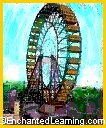 TheFerris Wheel is a large amusement-park ride that is made of a giant,vertical, metal wheel that slowly turns around. The wheel is equippedwith hanging compartments for people, who ride around in a circle,going far above the ground. The Ferris Wheel was invented by thePittsburgh, Pennsylvania bridge-builder George Washington Gale FerrisJr. (1859-1896) . The first Ferris wheel was opened on June 21, 1893 atthe Chicago World's Fair. This Ferris wheel was 250 feet tall (thediameter of the wheel) - this is about the height of a 25 storybuilding! It had 36 wooden cars that could each seat 40 people, andhold another 20 standing people plus a conductor. Each car was 27 feetlong, 13 feet wide, and 9 feet tall. A total of 2000 people could ridethe wheel at one time. The wheel was powered by two 1,000 horsepowerengines and weighed over 4,000 tons. It cost 50 cents per ride. Thissame Ferris wheel was later used at the St. Louis exposition in 1904,but was scrapped in 1906. Ferris wheels are now common at amusementparks around the world - most are much smaller than the original. TheFerris Wheel is a large amusement-park ride that is made of a giant,vertical, metal wheel that slowly turns around. The wheel is equippedwith hanging compartments for people, who ride around in a circle,going far above the ground. The Ferris Wheel was invented by thePittsburgh, Pennsylvania bridge-builder George Washington Gale FerrisJr. (1859-1896) . The first Ferris wheel was opened on June 21, 1893 atthe Chicago World's Fair. This Ferris wheel was 250 feet tall (thediameter of the wheel) - this is about the height of a 25 storybuilding! It had 36 wooden cars that could each seat 40 people, andhold another 20 standing people plus a conductor. Each car was 27 feetlong, 13 feet wide, and 9 feet tall. A total of 2000 people could ridethe wheel at one time. The wheel was powered by two 1,000 horsepowerengines and weighed over 4,000 tons. It cost 50 cents per ride. Thissame Ferris wheel was later used at the St. Louis exposition in 1904,but was scrapped in 1906. Ferris wheels are now common at amusementparks around the world - most are much smaller than the original.
 FORD, HENRY FORD, HENRY
Henry Ford (1863-1947) was an American engineer and industrialist who used the first conveyor belt-based assembly-linesin his car factory, revolutionizing factory production. Fordmanufactured affordable cars and paid high wages to his factoryworkers, allowing workers to buy the cars they made. After early workas a machinist, Ford built a gasoline engine in 1893. In 1896, Fordbuilt a "horseless carriage," which he called the "Quadricycle," whichmeans "four wheels" (others, including Charles Edgar and J. FrankDuryea, Elwood Haynes, Hiram Percy Maxim, and Charles Brady King hadbuilt earlier "horseless carriage"). In 1899, Ford formed the DetroitAutomobile Company (which was later called the Henry Ford Company andthen the Cadillac Motor Car Company). Ford introduced the Model T inOctober 1908; it was a great success (every Model T was painted black).Ford introduced conveyor belt-based assembly-line factory productionand a $5 daily wage in 1913-14 in Ford's Highland Park, Michigan plant(primitive assembly line production had been started in 1901 by RansomeEli. Olds, another early car-maker). This type of production greatlyreduced the amount of time taken to put each car together (93 minutesfor a Model T) from its parts, reducing production costs.
FOUCAULT, JEAN
 Jean Bernard L閛n Foucault (1819-1868) was a French physicist who invented the gyroscope(1852) and the Foucault pendulum (1851). A gyroscope is essentially aspinning wheel set in a movable frame. When the wheel spins, it retainsits spatial orientation, and it resists external forces applied to it.Gyroscopes are used in navigation instruments (for ships, planes, androckets). Foucault was the first person to demonstrate how a pendulumcould track the rotation of the Earth (the Foucault pendulum) in 1851.He also showed that light travels more slowly in water than in air(1850) and improved the mirrors of reflecting telescopes (1858). Jean Bernard L閛n Foucault (1819-1868) was a French physicist who invented the gyroscope(1852) and the Foucault pendulum (1851). A gyroscope is essentially aspinning wheel set in a movable frame. When the wheel spins, it retainsits spatial orientation, and it resists external forces applied to it.Gyroscopes are used in navigation instruments (for ships, planes, androckets). Foucault was the first person to demonstrate how a pendulumcould track the rotation of the Earth (the Foucault pendulum) in 1851.He also showed that light travels more slowly in water than in air(1850) and improved the mirrors of reflecting telescopes (1858). |
Rate
-
1
View Rating Log
-
|
|
|
|
|
|
|
|
|
|
|
FOUNTAIN PEN
 LewisE. Waterman was an American inventor and insurance salesman whodeveloped a relatively leak-proof fountain pen; he patented his newinvention in 1884 and revolutionized writing. Before his fountain pen,pen tips had to be tipped into ink after every few words. Waterman putan ink reservoir in the pen above the pen's metal nib (point). Thisreservoir would hold enough ink for a few pages of writing. There weremany problems in developing the fountain pen, especially the difficultyof controlling the flow of the ink. Putting a sealed reservoir abovethe nib wouldn't let the ink flow, but if it wasn't sealed, all the inkwould flow at once. Waterman used capillary action to replace the inkin the rubber sac with air so that the ink flowed smoothly but did notflow all at once. Also, the metals in the ink dissolved the steel pennib, so Waterman used an iridium-plated gold nib. Waterman was also thefirst person to place a clip on the cap of the pen. LewisE. Waterman was an American inventor and insurance salesman whodeveloped a relatively leak-proof fountain pen; he patented his newinvention in 1884 and revolutionized writing. Before his fountain pen,pen tips had to be tipped into ink after every few words. Waterman putan ink reservoir in the pen above the pen's metal nib (point). Thisreservoir would hold enough ink for a few pages of writing. There weremany problems in developing the fountain pen, especially the difficultyof controlling the flow of the ink. Putting a sealed reservoir abovethe nib wouldn't let the ink flow, but if it wasn't sealed, all the inkwould flow at once. Waterman used capillary action to replace the inkin the rubber sac with air so that the ink flowed smoothly but did notflow all at once. Also, the metals in the ink dissolved the steel pennib, so Waterman used an iridium-plated gold nib. Waterman was also thefirst person to place a clip on the cap of the pen.
FROEBEL, WILHELM A.
Friedrich WilhelmAugust Froebel (also written Fr鯾el) (1782-1852) was a German educatorand educational reformer who invented the kindergarten (which means"garden of children"). He opened the first kindergarten in BadBlankenburg (near Keilhau) in 1837. Froebel founded a kindergartentraining school at Liebenstein, Germany in 1849. After some conflictsand mistaken charges of treason, the German government banned theestablishment of kindergartens in 1851. In 1860, the governmentrepealed the ban, and kindergartens re-opened (unfortunately, this wasafter Froebel's death). Froebel's kindergartens included pleasantsurroundings, self-motivated activity, play, music, and the physicaltraining of the child.
GAYETTY, JOSEPH
 JosephGayetty invented toilet paper in 1857. His new toilet paper wascomposed of flat sheets. Before Gayetty's invention, people tore pagesout of mail order catalogs - before catalogs were common, leaves wereused. Unfortunately, Gayetty's invention failed. Walter Alcock (ofGreat Britain) later developed toilet paper on a roll ( instead of inflat sheets). Again, the invention failed.In 1867, Thomas, Edward and Clarence Scott (brothers fromPhiladelphia, Pennsylvania, USA) were successful at marketing toiletpaper that consisted of a small roll of perforated paper . They soldtheir new toilet paper from a push cart - this was the beginning of theScott Paper Company. JosephGayetty invented toilet paper in 1857. His new toilet paper wascomposed of flat sheets. Before Gayetty's invention, people tore pagesout of mail order catalogs - before catalogs were common, leaves wereused. Unfortunately, Gayetty's invention failed. Walter Alcock (ofGreat Britain) later developed toilet paper on a roll ( instead of inflat sheets). Again, the invention failed.In 1867, Thomas, Edward and Clarence Scott (brothers fromPhiladelphia, Pennsylvania, USA) were successful at marketing toiletpaper that consisted of a small roll of perforated paper . They soldtheir new toilet paper from a push cart - this was the beginning of theScott Paper Company.
GEIGER COUNTER
The Geiger counter(sometimes called the Geiger-Muller counter) is a device that detectsionizing radioactivity (including gamma rays and X-rays) - it countsthe radioactive particle that pass through the device. The Germannuclear physicist Hans Wilhelm Geiger (Sept. 30, 1882- Sept. 24, 1945)developed the device from 1908-12. At that time, Geiger was anassistant to the British physicist Ernest Rutherford (1871-1937).[Geiger's work helped Rutherford discover that radioactive elements cantransform into other elements and that atoms have a nucleus]. In 1928,the Geiger counter was improved by the German physicist E. WaltherMuller.
GERSTENZANG, LEO
The Q-tip wasinvented in the 1920's Leo Gerstenzang (a Polish-born American). Hiswife had used a toothpick with cotton stuck on the end to clean theirbaby's ears, and Leo invented Q-tips to replace her jury-riggedinvention. Gerstenzang's original Q-tips consisted of a wooden stickswathed in cotton at both ends; much later, the wood was replaced bywhite cardboard. Gerstenzang started the Infant Novelty Company to sellQ-tips (which he then called Baby Gays); in 1926, he changed the nameof his product to Q-Tips |
Rate
-
1
View Rating Log
-
|
|
|
|
|
|
|
|
|
|
|
 GLOBE GLOBE
MartinBehaim (1459-1537) was a German mapmaker, navigator, and merchant whomade the earliest globe, called the "N黵nberg Terrestrial Globe". Itwas made during the years 1490-1492; the painter Georg Glockendonhelped in the project. Behaim had previously sailed to Portugal as amerchant (in 1480). He had advised King John II on matters concerningnavigation. He accompanied the Portuguese explorer Diogo Cam (C鉶) on a1485-1486 voyage to the coast of West Africa; during this trip, themouth of the Congo River was discovered. After returning to N黵nberg in1490, Behaim began construction of his globe (which was very inaccurateas compared to other maps from that time, even in the areas in whichBehaim had sailed). It was once thought that Behaim's maps might haveinfluenced Columbus and Magellan; this is now discounted. Behaim mayhave also developed an astrolabe. Behaim's globe is now in the GermanNational Museum in N黵nberg.
GUILLOTINE
 Many,many people were being executed during the French Revolution, and Dr.Joseph-Ignace Guillotin (1738-1821) suggested that decapitation wouldbe a more humane method for execution. Experiments with cadavers (deadpeople) were done. The device that we call the guillotine was invented;it is a tall wooden framework with a hole to keep a person's head stilland a large falling blade. Although he did not invent the machine wecall the guillotine, Guillotin's name is forever attached to it. Theguillotine was first was used on April 25, 1792 at the Place de Gr鑦e(the victim was a highway man). The most famous victims of theguillotine include the deposed French King Louis XVI and hisextravagant wife Queen Marie Antoinette, who were beheaded on January21, 1793. The guillotine was used in France until 1981, when capitalpunishment was abolished. Many,many people were being executed during the French Revolution, and Dr.Joseph-Ignace Guillotin (1738-1821) suggested that decapitation wouldbe a more humane method for execution. Experiments with cadavers (deadpeople) were done. The device that we call the guillotine was invented;it is a tall wooden framework with a hole to keep a person's head stilland a large falling blade. Although he did not invent the machine wecall the guillotine, Guillotin's name is forever attached to it. Theguillotine was first was used on April 25, 1792 at the Place de Gr鑦e(the victim was a highway man). The most famous victims of theguillotine include the deposed French King Louis XVI and hisextravagant wife Queen Marie Antoinette, who were beheaded on January21, 1793. The guillotine was used in France until 1981, when capitalpunishment was abolished.
 HERON HERON
Thesteam engine was invented by Heron, an ancient Greek geometer andengineer from Alexandria. Heron lived during the first century AD andis sometimes called Hero. Heron made the steam engine as a toy, andcalled his device "aeolipile," which means "wind ball" in Greek. Thesteam was supplied by a sealed pot filled with water and placed over afire. Two tubes came up from the pot, letting the steam flow into aspherical ball of metal. The metallic sphere had two curved outlettubes, which vented steam. As the steam went through the series oftubes, the metal sphere rotated. The Greeks never used this remarkabledevice for anything but a novelty. A steam engine designed for realwork wasn't designed until 1690, when Dionysius Papin published plansfor a for a high-pressure steam engine. Thomas Savery built the firststeam engine in 1698. Watt later improved the steam engine.
HOPPER, GRACE M.
Rear Admiral GraceMurray Hopper (1906 - 1992) was a US naval officer and mathematicianwho invented the computer compiler (called the A-O) in 1952. Hercompiler revolutionized computer programming, automatically translatinghigh-level instructions (easier to understand by people) into machinecode (the cryptic, native language of the central processing unit).Hopper and a team developed the first user-friendly businessprogramming language, COBOL (COmmon Business-Oriented Language). Thereis an unconfirmed story that Hopper determined than an error in theearly Mark II computer was caused by a moth that was trapped in it; shethen coined the term "computer bug."
 HOT-AIR BALLOON HOT-AIR BALLOON
Ahot-air balloon is a balloon that is filled with hot air; it risesbecause hot air is less dense (lighter) than the rest of the air. Joseph and Jacques Etienne Montgolfierwere two French bothers who made the first successful hot-air balloon.Their first balloon was launched in December, 1782, and ascended to analtitude of 985 ft (300 m). This type of hot-air balloon was called theMontgolfi閞e; it was made of paper and used air heated by burning wooland moist straw. The first passengers in a hot-air balloon were arooster, a sheep, and a duck, whom the Montgolfier brothers sent up toan altitude of 1,640 ft (500 m) on September 19, 1783 (the trip lastedfor 8 minutes); the animals survived the landing. This event wasobserved by King Louis XVI and Queen Marie Antoinette of France. |
Rate
-
1
View Rating Log
-
|
|
|
|
|
|
|
|
|
|
|
HOT DOGS
 Hotdogs began as sausages sold in buns. They were first sold from carts byGerman immigrants on the streets of New York City in the 1860s. The bunreplaced a plate and made the hot dog easier to carry and eat.Sauerkraut was provided as a relish on the hot dog. Hotdogs began as sausages sold in buns. They were first sold from carts byGerman immigrants on the streets of New York City in the 1860s. The bunreplaced a plate and made the hot dog easier to carry and eat.Sauerkraut was provided as a relish on the hot dog.
INTEGRATED CIRCUIT
An integratedcircuit (IC) or chip is a wafer of material to which impurities havebeen added (in just the right patterns) so that the entire chip is acircuit composed of many transistors. The chip (usually made of siliconor germanium) makes computational devices, like computers, very smalland very inexpensive. IC's were invented independently in 1959 by JackKilby and Robert Noyce.
JANSSEN, ZACHARIAS
Zacharias Janssenwas a Dutch lens-maker who invented the first compound microscope in1595 (a compound microscope is one which has more than one lens). Hismicroscope consisted of two tudes that slid within one another, and hada lens at each end. The microscope was focused by sliding the tubes.The lens in the eyepiece was bi-convex (bulging outwards on bothsides), and the lens of the far end (the objective lens) wasplano-convex (flat on one side and bulging outwards on the other side).This advanced microscope had a 3 to 9 times power of magnification.Zacharias Janssen's father Hans may have helped him build themicroscope.
JUDSON, WHITCOMB L.
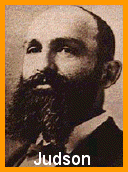  WhitcombL. Judson was an American engineer from Chicago, Illinois, who inventeda metal zipper device with locking teeth in 1890. Judson patented his"clasp-locker'' on Aug. 29, 1893; later in 1893, he exhibited this newinvention at the Chicago World's Fair. He never succeeded in marketinghis new device. The zipper was improved by the Swedish-Americanengineer, Gideon Sundbach, and was named by the B.F. Goodrich companyin 1923. Judson died in 1909, before his device became commonly usedand well-known WhitcombL. Judson was an American engineer from Chicago, Illinois, who inventeda metal zipper device with locking teeth in 1890. Judson patented his"clasp-locker'' on Aug. 29, 1893; later in 1893, he exhibited this newinvention at the Chicago World's Fair. He never succeeded in marketinghis new device. The zipper was improved by the Swedish-Americanengineer, Gideon Sundbach, and was named by the B.F. Goodrich companyin 1923. Judson died in 1909, before his device became commonly usedand well-known
 KALEIDOSCOPE KALEIDOSCOPE
Akaleidoscope is a tube you look into that makes beautiful, colorfulpatterns using mirrors. The kaleidoscope was invented by the Scottishphysicist Sir David Brewster (1781-1868); he patented the kaleidoscopein 1817. |
|
|
|
|
|
|
|
|
|
|
|
LAND, E. H.
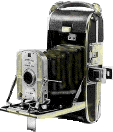  EdwinHerbert Land (1909-1991) was an American physicist and inventor whodeveloped the first modern light polarizers (which eliminate glare) andother optical devices, investigated the mechanisms of color perception,and developed the instant photography process (the Polaroid camera). Land established the Polaroid Corp. in 1937. EdwinHerbert Land (1909-1991) was an American physicist and inventor whodeveloped the first modern light polarizers (which eliminate glare) andother optical devices, investigated the mechanisms of color perception,and developed the instant photography process (the Polaroid camera). Land established the Polaroid Corp. in 1937.
LATEX
Latex (a natural, stretchysubstance from which rubber is made) is extracted from rubber trees.Rubber trees are large trees (belonging to the spurge family, familyEuphorbiaceae) that live in tropical (warm) areas. These trees aretapped for their latex, which is produced in their bark layers (latexis not the sap). The Par |
Rate
-
1
View Rating Log
-
|
|
|
|
|
|
|
|
|
|
|
Reply #32 hitamputih's post
|
|
|
|
|
|
|
|
|
|
|
|
aku pnh tau psl muse 2 tp gamba x pnh plak.. petak upenyer |
|
|
|
|
|
|
|
|
|
|
|
"Mobile" or "Cell"
What is correct: "mobile" phone or "cell" phone? Same thing. The word cell is short for cellular and has been used since Bell Laboratories set up the first wireless telephony system in 1947. It consisted of a network of low-powered transmitters, each placed to cover a small region or cell. Commercial cell phones were introduced in Chicago in 1978 and in Europe in 1981. If you're surprised to learn that mobile telephony has been around so long, here's another surprise: Bell Laboratories invented the videophone in 1927.
Numbers
Most numbers on a phone keypad have letters assigned to them. For instance, the letters for the number 2 are a, b and c. But there are no letters assigned to the numbers 1 and 0. These numbers remain unassigned because they are so-called flag numbers, kept for special purposes such as emergency or operator services. Previously, Q and Z were not included on the keypad, meaning that you could not dial a word such as Quincy. Q is now assigned to the number 7, and Z to number 9.
Tones & stuff
Jamster! - Polyphonic Ringtones, Colour Wallpapers and more for your phone
Multimedia Messaging Services - MMS
Dump or make up via SMS - fancyfish
Which phone?
Browse different types of mobile/cell phones at amazon. Their help section explains which phone and which phone plan could be the best for you, also featuring plans that offer free phones:
USA cell phones
UK mobile phones
What is a SMS?
Text messaging is a SMS (Short Message Service) that can be made from a mobile phone (cell phone) to another mobile phone or from and to web based services such as IQC [where you don't need a phone to send an SMS]. SMS generally allows the sending and receiving of a maximum of 160 characters. You can also send non-text messages such as ringtones, logos, cards, calendars, clipart and WAP. More than 20 billion text messages are sent per month.
And MMS?
Multimedia Messaging Services (MMS) is a step up from SMS. MMS use next generation networks to send pictures and video clips between subscribers |
Rate
-
1
View Rating Log
-
|
|
|
|
|
|
|
|
|
|
|
-- tgh syok bg credits baru perasan yg bro guy dah bg kredits utk semua posting waterboy..huhu rezeki awak lah waterboy..chem weng weng malam ni  |
|
|
|
|
|
|
|
|
|
|
|
Originally posted by <i>chiKenliTeL</i> at 25-2-2007 04:18 PM<br />
<img src="images/smilies/cry.gif" smilieid="83" border="0" alt="" /> <img src="images/smilies/cry.gif" smilieid="83" border="0" alt="" /> <img src="images/smilies/cry.gif" smilieid="83" border="0" alt="" />牋abis la kedit tk sy jugak ~~
hehehe post la lg eh..nnti bg credit ..no hal  |
|
|
|
|
|
|
|
|
|
|
|
Reply #36 chemist_UTM's post
ye la sis...bro guy dah bagi...tapi nanti boy post lagi untuk menggantikan kredit lebih tu... |
|
|
|
|
|
|
|
|
|
|
|
The First Motorcycle
By Dave Tharp, Virtual Museum Curator
Link to original article
"Who invented the first motorcycle?" It seems like a simple question, but the answer is a bit complicated.
Motorcycles are descended from the "safety" bicycle, bicycles with front and rear wheels of the same size, with a pedal crank mechanism to drive the rear wheel. Those bicycles, in turn were descended from high-wheel bicycles. The high-wheelers were descended from an early type of push-bike, without pedals, propelled by the rider's feet pushing against the ground. These appeared around 1800, used iron-banded wagon wheels, and were called "bone-crushers," both for their jarring ride, and their tendency to toss their riders.
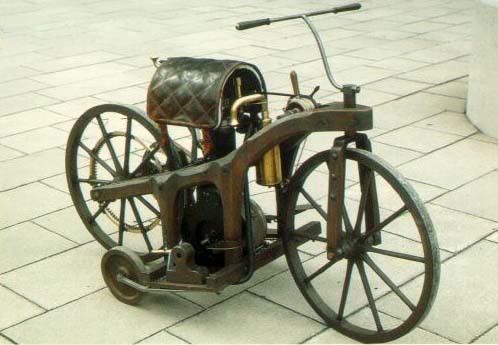
Daimler's wooden-framed "bone crusher"
Gottlieb Daimler (who later teamed up with Karl Benz to form the Daimler-Benz Corporation) is credited with building the first motorcycle in 1885, one wheel in the front and one in the back, although it had a smaller spring-loaded outrigger wheel on each side. It was constructed mostly of wood, with the wheels being of their on-banded wooden-spoked wagon-type, definitely a "bone-crusher"chassis.
It was indeed powered by a single-cylinder Otto-cycle engine, and may have had a spray-type carburetor. (Daimler's assistant, Wilhelm Maybach was working on the invention of the spray carburetor at the time).
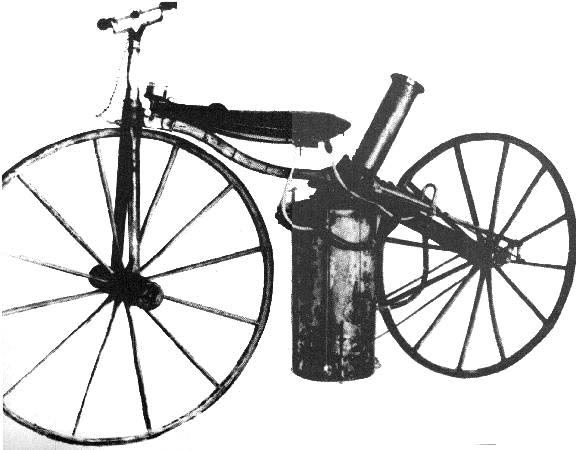
S. H. Roper's 1869 Steam-cycle
If one counts two wheels with steam propulsion as being a motorcycle, then the first one may have been American. One such machine was demonstrated at fairs and circuses in the eastern US in 1867, built by one Sylvester Howard Roper of Roxbury, Massachusetts. There is an existing example of a Roper machine, dated 1869. It's powered by a charcoal-fired two-cylinder engine, whose connecting rods directly drive a crank on the rear wheel. This machine predates the invention of the safety bicycle by many years, so its chassis is also based on the"bone-crusher" bike.

The 5-cylinder Millet of 1892
Most of the development during this earliest of eras concentrated on three and four-wheeled designs, since it was complex enough to get the machines running without having to worry about them falling over. The next really notable two-wheeler was the Millet of 1892. It used a 5-cylinder engine built as the hub of its rear wheel. The cylinders rotated with the wheel, and its crankshaft constituted the rear axle.
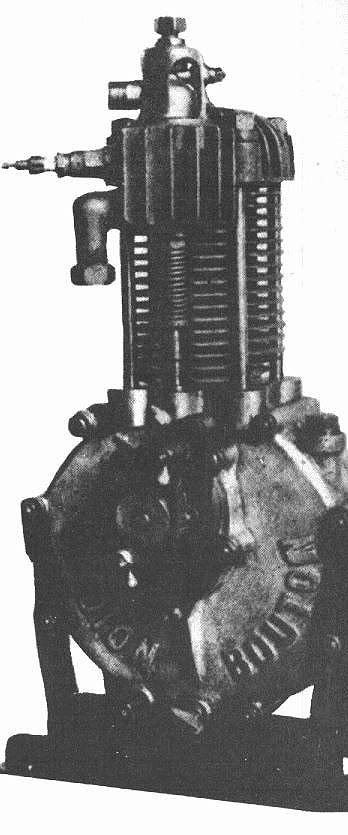
The Mother of all motorcycle engines - the DeDion-Buton
The first really successful production two-wheeler though, was the Hildebrand & Wolfmueller, patented in Munich in 1894. It had a step-through frame, with its fuel tank mounted on the downtube. The engine was a parallel-twin, mounted low on the frame, with its cylinders going fore-and-aft. The connecting rods connected directly to a crank on the rear axle, and instead of using heavy flywheels for energy storage between cylinder-firing, it used a pair of stout elastic bands, one on each side outboard of the cylinders, to help out on the compression strokes. It was water-cooled, and had a water tank/radiator built into the top of the rear fender.
In 1895, the French firm of DeDion-Buton built an engine that was to make the mass production and common use of motorcycles possible. It was a small, light, high revving four-stroke single, and used battery-and-coil ignition, doing away with the troublesome hot-tube. Bore and stroke figures of 50mm by 70mm gave a displacement of 138cc. A total loss lubrication system was employed to drip oil into the crankcase through a metering valve, which then sloshed around tolubricate and cool components before dumping it on the ground via a breather. DeDion-Buton used this 1/2 horsepower powerplant in roadgoing trikes, but the engine was copied and used by everybody, including Indian and Harley-Davidson in the U.S.
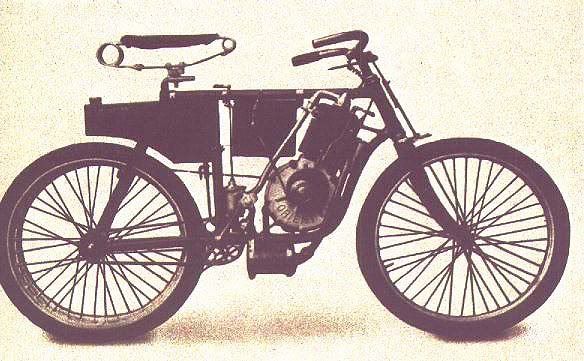
First American production motorcycle - 1898 Orient-Aster
Although a gentleman named Pennington built some machines around 1895(it's uncertain whether any of them actually ran), the first US production motorcycle was the Orient-Aster, built by the Metz Companyin Waltham, Massachusetts in 1898. It used an Aster engine that was a French-built copy of the DeDion-Buton, and predated Indian (1901) by three years, and Harley-Davidson (1902) by four. |
Rate
-
1
View Rating Log
-
|
|
|
|
|
|
|
|
|
| |
Category: Belia & Informasi
|